Recently I had the opportunity to travel to London and meet up with Karl McDermott, the head groundsman at Lord’s. I have been following Karl’s career for many years. I first met him in 2007 when I was privileged to have been able to judge the surface of Clontarf Cricket Club where Karl was nominated for his commitment, dedication and work achieved in looking after the clubs’ grounds.
I was soundly impressed with what I saw, combined with his turf care knowledge. It was enough for me to put him forward as a contender for the ICC European Cricket Groundsman of the year award, run by Cricket World - which he duly went on to win, ironically receiving his award at Lord’s. Whether that was the catalyst for Karl to move on and develop his career, I would like to think so.
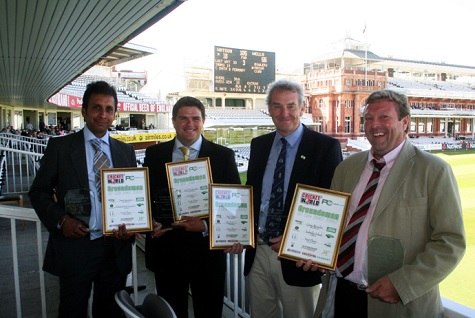
Karl began his career at Clontarf in 1991 and, after six years, was appointed head groundsman, in total spending seventeen years at the club. During that time he also gained a substantial amount of overseas cricket club experience, working both in Sydney and at a school in South Africa between 1998-2003.
With the experience gained, Karl began to raise the standards of the ground at Clontarf. The Club continued to host international matches, a great compliment to Karl for all the hard work being put in at the ground. An early highlight was a World Cup match between the West Indies and Bangladesh.
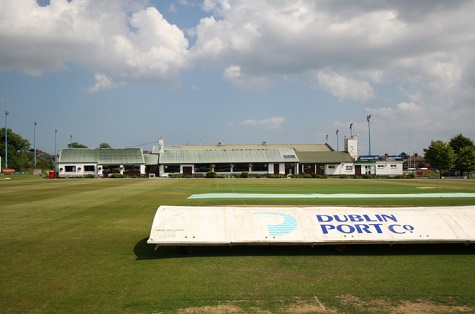
Getting the taste for preparing pitches for a higher standard of cricket, he soon made the decision to leave his beloved club and try his hand at another level. He was soon introduced to Tim Packwood, head groundsman at Worcester CCC, where he secured a job helping Tim prepare the pitches and again, was able to gain more valuable knowledge especially when dealing with the annual floods that occur most winters at the County Ground.
In 2008 the post of deputy at the Ageas Bowl came up and he got it, working under Nigel Gray. When Nigel retired in 2015, Karl took up the reins and spent a further 3 years at the club. He originally had no intention of applying for the Lord’s job, being happy with his life in Hampshire. However, once it was announced that Mick Hunt was retiring after a staggering 49 years at the helm, circumstances changed and he thought if he didn’t try now, he probably never get another opportunity. Following intense interviews, he finally got offered the role of HG at Lord’s with a start date of December 1st 2018.
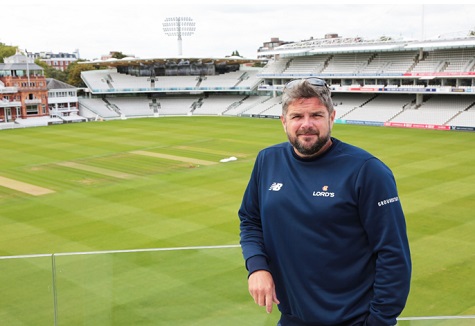
I asked Karl what drives him on? He told me it’s the ongoing challenge that the game of cricket offers him, testing his groundsmanship skills. “The challenge of producing a pitch fit for purpose,” said Karl, “often under an ever-changing set of pressures that include the weather, players expectations, fixtures lists and ambitions of the club, keeps me going.”
Karl continued, “These pressures on me and the rest of the county level groundmen, over recent years, have gone through the roof - especially when the results of any game are often related to the performance of the pitch. No two pitches are ever going to perform the same. The very position they are in, and the preparation of these pitches, can hugely be influenced by the weather and the work we have to do during the final 10-14 day preparation cycle.
“There’s not one of us, who really know how a given pitch will perform until the first ball is bowled. It is only after years of experience we may have a better understanding of what may happen”.
A tough challenge
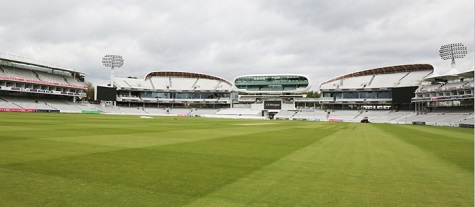
Arriving at Lord’s and trying to emulate and continue the work of Mick was always always going to be a tough challenge, felt Karl - especially when all turf professionals have their own way of doing things. “However,” he said, “I was not about to make any sweeping changes. It was all about finding out how the place was run. I consider myself lucky that most of my staff have over 20 -30 years working experience at Lords’.”
In total Lord’s has seven members of staff, including Karl, to look after the square, outfield and Nursery Ground. Therefore, Karl says his goals for the first two years was to get to know the running of the set up and get to know the people he would be working with. The first year,” Karl explained, “was simply letting the groundstaff get on with their methods and maintenance regimes, while taking notes on what could be improved or achieved. However, in 2020 Covid got in the way, and I suddenly found myself having to work alone.”
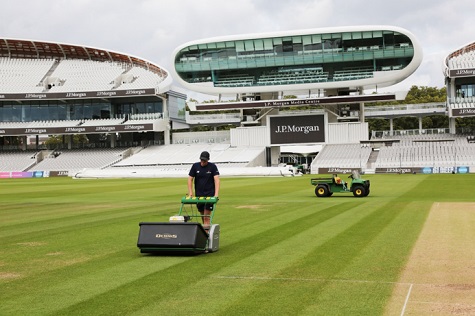
When lockdown came, Karl suddenly found he had the whole place to himself. “It was extremely quiet and peaceful,” he says, “especially when I was out enjoying rolling or mowing the square and outfield. In fact, it would take a couple of hours to roll the square and at least two days to mow the square and outfield. I then had the practice ground to maintain as well - so by the end of the week it was time to start all over again!”
With the grass growth becoming more vigorous during the summer months, Karl managed to enlist another member of staff to come in and help. Then gradually as Covid restrictions reduced, more and more staff were able to return to work.
“By the start of the new 2021 season,” Karl said, “we managed to bring back all the staff, and start preparing the ground to fulfil our fixture list that included two Test matches against New Zealand and India.”
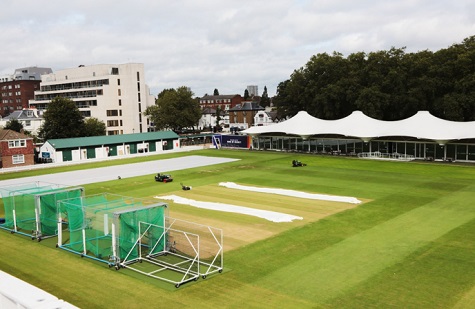
When I met Karl at the end of September, Lord’s had already faced sixty-three match days of cricket at the ground followed by numerous practice sessions on the Nursery ground. Following the Bob Willis Trophy final, end of season renovations was finally able to kick off in earnest in early October.
I asked Karl about the unique outfield at Lord’s. He has described it as the biggest golf green in the world. Karl explained, “In 2002 the club basically dug out the old outfield which was prone to flooding, and replaced it with a total sand based rootzone built to a USGA golf green specification having a 300mm depth of rootzone over a raft of drains designed to be able to give us infiltration rates of around 130mm per hour. What this means is we effectively rarely get any standing water when it rains. However, it becomes very hungry and needs watering regularly to maintain plant heath. We use a combination of slow release granular and liquid feeds as well as aerating and verticutting on a regular basis. We maintain a cutting height of around 10mm using our fleet of Allett Regal mowers. ”

As for the square, Karl tells me it accommodates twenty three Ongar (30%) clay loam based pitches, with one installed hybrid pitch being installed a few years ago as a trial to reduce wear. This hybrid contains approximately 190,000 individual stitches of plastic fibre grass filaments sown down to a depth of 75-100mm, made up of 46kg of yarn, totalling 38km and represents less than 5% of the totals grass cover of a 10ft wide pitch (current ECB rules). “The hybrid pitches have performed very well,” Karl says, “and allows us to have better surfaces with less wear. “
More and more of these pitches are being installed within the county structure and are becoming a popular installation on the net areas. Also, many grass roots clubs are now investing in these hybrid pitches. However, there still some concerns, to what happens to these once they have worn out? How is the plastic recycled is a question that clubs are asking themselves. Karl says in Lord’s case it could mean completely digging up and reconstructing a new pitch. We know that would come at a cost and would take a couple of years to bring into play,” he says. “But this is not considered to be a problem in the medium term.”

As for maintaining the square, Lord’s mows daily at a height of cut (hoc) set at 13mm, fed on a regular basis and conducts a full 10-14 day pitch preparation for matches, which consists of a rolling and watering programme, gradually reducing the hoc down to match height of around 4-5 mm. This is combined with verticutting and brushing to thin out the sward.
“The weather will significantly drive the work we need to undertake during match preparations,” says Karl, “and we will use the hover cover and sheets to help control the moisture levels in the pitch. We also use a clegg hammer to monitor pitch hardness and try to maintain a figure of around 220 gravites. That mostly affords us the consistency of ball bounce and pace we are looking for.
“Our biggest problem concerning the square is our notorious slope that is in excess of eight feet from one side of the square to the other - something I have not come across on my previous grounds as any slopes were marginal. The famous Lord’s slope is our home advantage, and it tests both batsman and bowler during matches. However, the challenge for us is being able to water consistently and ensure we can control where the water runs to.”
I ask Karl what their end of season renovations are. “For a number of years,” he says, “we have enlisted the help of Simon Hutton of Fine Turf who comes in each year and helps us renovate both the main ground and Nursery ground. He really understands our needs and always does an excellent job. If we need to speed things up due to the weather, he can also bring in extra bodies to speed up the work.”

Renovation of the main square Is centred around the use of the Koro Fraise mower, taking off 2-5mm depth of vegetation in two directions in line of play, followed up with the Graden machine doing several passes to create a key for the seed to drop in. “We disc seed anything between 50-60 grams per m2 of pure dwarf rye grass cultivars chosen from the latest STRI Seed trials Booklet,” Karl tells me.
“We then top dress lightly with about 8 bags of loam per pitch, drag mat in and then cover with germination sheets. Once it’s up, usually within 10-14 days, we then start mowing to thicken the sward throughout the winter months. If all goes well, we try to aerate the square sometime during December .”
As for the outfield Karl says that Simon and his team Graden scarify the outfield in a number of directions, sweep and vacuum up the arisings, hollow core, topdress with about 80 tonnes of new sand and overseeded using a Vredo disc seeder, applying a Johnson’s fairway seed mixture.
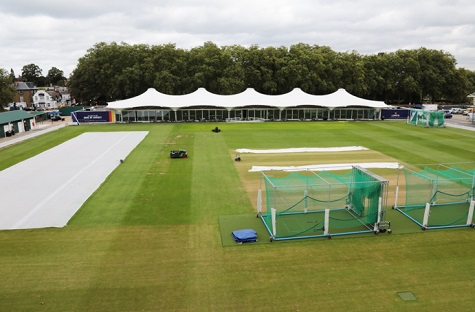
“As for the Nursery ground ” says Karl, “it’s usually a combination of both of us doing the work together.” Fine Turf also has also renovated several areas that were affected by the building of the two new Compton and Edrich stands that have just been completed, increasing the ground’s capacity to 31,600.
Ever modernising

In terms of new machinery that Karl purchases to help him with his work, he says they have a regular programme of replacing old machinery with new. “In the last couple of years,” he says, “we have bought some new Dennis Razors, G860s and a Pro 34 rotary mower which we use to clean up the square.
“We have been trailing some lighting rigs over the last couple of years and we’re now going to purchase a new set that can cover a whole length of a single pitch. We intend to use it throughout the winter months with the aim to move it on a daily basis across the square.”
I ask Karl what new technologies he thinks have helped the industry in recent years? He tells me, “We have been blessed with the introduction of several innovations and an array of machinery to make our job more efficient, allowing us to deliver the playing surfaces we desire.
“In no particular order, I would say the much-improved raised covering systems and sheeting have made the job of preparing pitches a lot easier. Also, the development of the Koro Fraise mower has revolutionised end of season renovation practices. Lighting rigs have enabled us to promote healthy grass growth in problematic shaded areas and during the depths of winter.
“The improvement to mower design and the development of the cassette systems has also helped us become more efficient. Also the development of a range of agronomic measuring tools such as moisture metres and probes, Clegg hammers and numerous weather apps and software programmes to record data.”
I round up my time with Karl asking him what changes has he implemented in his time at Lord’s? “Not much to date really,” he says. “I am still very much a hands-on groundsman and like to get my hands dirty, spending a lot of time with the staff focussing on pitch preparations.
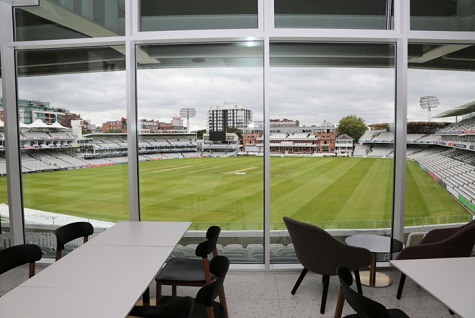
“I have tweaked our rolling programme, reducing the time we spend on it. I see it as more important to roll when the conditions are conducive to achieving some beneficial compaction. It’s something many groundsmen have started to practice since the publication of the Optimisation Of Cricket Pitch Rolling by Peter Shipton at Cranfield University.
“Other than that, it’s all about working as a team and supporting one another. Next year I hope to conduct an exchange visit. We’ll have one of their staff come and experience working here at Lord’s.”
Karl tells me he talks on a daily basis with many county groundsmen via their WhatsApp group. When time allows, he also likes to visit other high-end sporting venues to see how they cope, sharing experiences.
“As for media work,” Karl says, “it is generally full on. I attend many meetings and generally keep people informed of what we are doing here at Lord’s. I recently gave a talk at The Amenity Forum Conference and will be attending this year’s SALTEX show at the NEC. I’ll be talking with several other senior grounds professionals about the issue of recruitment.
“All in all,” Karl concludes, “life at Lord’s is constantly busy and challenging to say the least. But I would not have it any other way.”
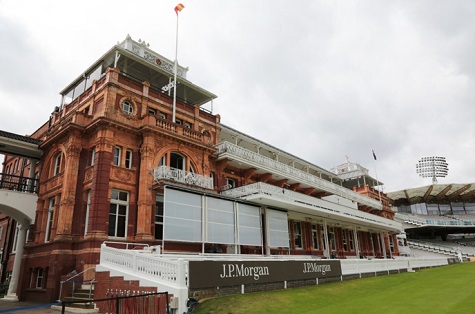
I would like to thank Karl for his time, allowing me the opportunity to see all the changes being made at Lord’s. The J P Morgan media suit was amazing and not forgetting the chance to go into the Pavilion and see the famous Long Room, viewing all the memorabilia associated with the MCC.
It was a true privilege to be shown around this ever-modernising, iconic sports venue.